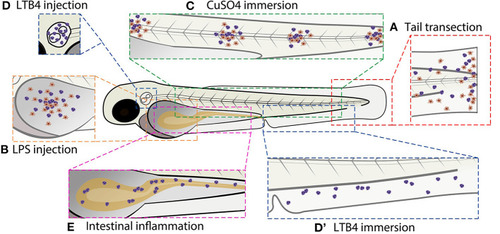Figure 2
- ID
- ZDB-FIG-210204-58
- Publication
- Xie et al., 2021 - Modeling Inflammation in Zebrafish for the Development of Anti-inflammatory Drugs
- Other Figures
- All Figure Page
- Back to All Figure Page
|
Schematic overview of commonly used zebrafish larval inflammation models. |

